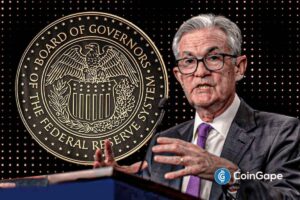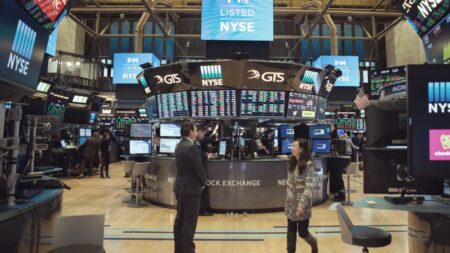Bitcoin’s Recent Price Decline: An Analysis of the Market Dynamics
Bitcoin, the world’s leading cryptocurrency, saw a significant decline on Wednesday, plummeting to approximately $88,600. This marks its lowest level since April and represents a decline of more than 5% from its 2025 opening price. The timing of this downturn coincided with the Federal Reserve’s release of minutes from its October meeting, which highlighted the “two-sided risks” facing the economy. The meeting minutes revealed a division among officials regarding the pace at which economic policies should be eased, raising concerns about how this uncertainty is impacting digital assets like Bitcoin.
The Federal Reserve’s discussion reflected growing concerns about the U.S. economy, citing slower job gains, an increasing unemployment rate, and waning labor demand as indicators that the economy may be veering towards a sharper downturn. Despite these signs, there remains cautious optimism about controlling inflation, which has yet to show sustainable returns to the Fed’s target rate of 2%. Tariff-driven inflation on goods and persistent pricing pressures in the service sector keep policymakers wary of making aggressive moves to ease monetary policy. This ongoing uncertainty contributes to the broader economic climate, affecting risk assets, including Bitcoin.
As the Fed grapples with these complexities, it’s clear that their upcoming decisions are far from predetermined. Participants in the meeting expressed a range of opinions, from advocating for a quarter-point rate cut to maintaining the current rates through year-end. Some members suggested that a more neutral monetary policy approach may be necessary, while others remain apprehensive of potential inflationary pressures. The marketplace is adapting, as evidenced by predictions from futures-like trading platforms. After the meeting’s minutes were released, the probabilities of a quarter-point cut for December plummeted from 52% to 30%, while the likelihood of maintaining the current rate climbed from 46% to nearly 70%.
This backdrop of economic uncertainty further complicates Bitcoin’s market situation, with experts weighing in on the volatile conditions. K33 Research analyst Vetle Lunde has expressed caution regarding Bitcoin’s derivatives market, suggesting that traders are piling on significant leverage as the cryptocurrency undergoes this corrective phase. With perpetual futures open interest surging by over 36,000 BTC—the most substantial weekly increase since April 2023—market dynamics are shifting rapidly. Lunde has characterized this behavior as “knife-catching,” warning that the current setup mirrors past episodes that typically led to further price declines.
Lunde’s analysis also includes price levels that may indicate a bottom for Bitcoin, estimating that the cryptocurrency could stabilize in the $84,000 to $86,000 range. However, he cautions that if selling pressure intensifies, Bitcoin could risk dipping further toward April’s low of $74,500. This potential for continued volatility has traders on edge, making it crucial for investors to stay informed about macroeconomic developments and their implications for Bitcoin’s price trajectory.
In conclusion, the recent decline of Bitcoin is not only a reflection of its internal market dynamics but also indicative of broader economic uncertainties that stem from conflicting signals from the Federal Reserve. As policymakers navigate these challenges, Bitcoin remains vulnerable to external pressures, emphasizing the need for informed investment strategies. As the cryptocurrency landscape evolves, keeping a close eye on both market sentiment and economic indicators will be essential for any trader or investor looking to navigate this turbulent environment.
This analysis, provided for informational purposes, underscores the inherent volatility and risk associated with cryptocurrency investments, particularly in these uncertain economic times. It serves as a reminder for investors to approach the market with a clear understanding of both technical and fundamental factors at play.
















